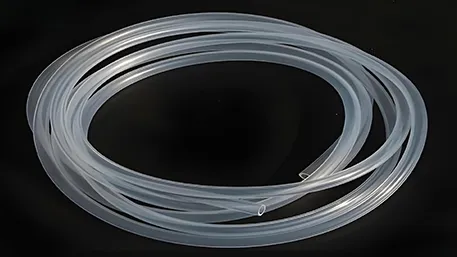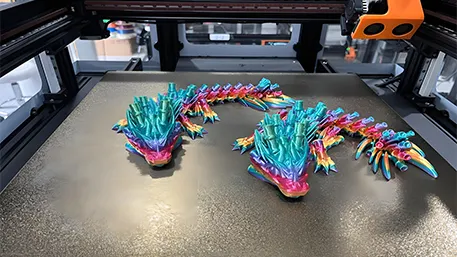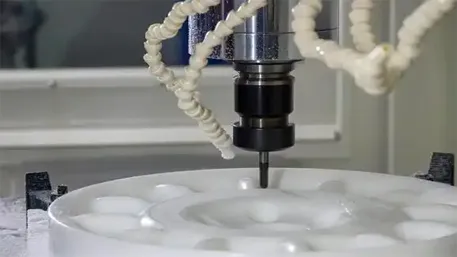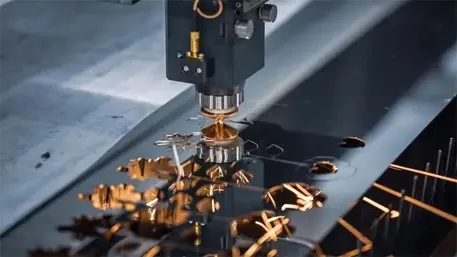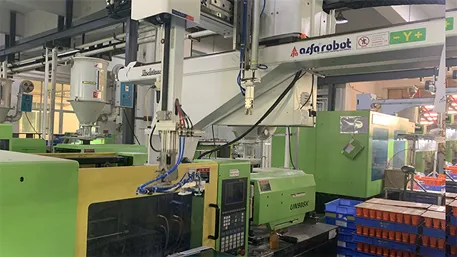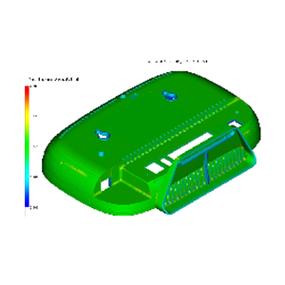In the rapidly developing industrial manufacturing field, injection molding technology, as an important means of plastics processing, continues to promote the innovation of product design and production. Among them, two-shot injection molding technology with its unique process advantages, in order to enhance product aesthetics, practicality and production efficiency to show significant advantages. This article will introduce the principle, application, advantages and future development trend of two-shot injection molding technology.
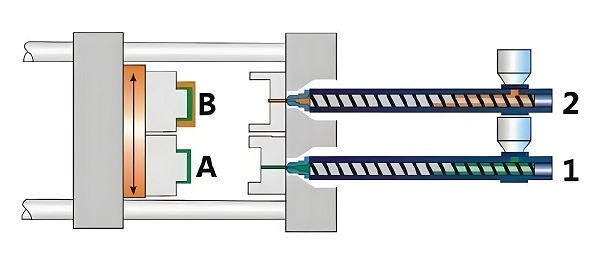
1. Overview of two-needle injection molding technology
Two-needle injection molding, also known as two-color injection molding or two-material injection molding, is a kind of two different colors or materials of plastics through the same injection molding machine, the same mold, divided into two molding technology. The technology uses two independent barrels to separately plasticize different colors of molten materials, and through a precise control system to control the injection order and proportion of the molten materials, so as to form plastic products with two-color or multi-color effects in the mold.
2. Technical Principle
The core of two-shot injection molding technology lies in its unique mold design and injection control system. The internal design of the mold has special runners and gates to ensure that the two melts can be accurately fused in the mold. The injection molding machine is equipped with two separate barrels and nozzles, each responsible for molding one color of melt. During the molding process, by precisely controlling the opening and closing valves and the opening and closing of the nozzles, the melt is injected alternately to form complex two-color or multi-color patterns.
3.Service Process
Demand analysis: Communicate with customers to clarify product design requirements, material selection, color matching, etc., to ensure that both parties agree on the expectations of the product.
Mould design: According to the product requirements, design and manufacture special two-color or multi-color injection molds. The mold design needs to consider the flow path of the melt, fusion points, air vents and other factors to ensure the smooth running of the injection process and the final quality of the product.
Material Preparation: According to the product design requirements, two or more different colors of plastic raw materials are prepared and pre-treated, such as drying and mixing.
Injection molding: The prepared plastic raw materials are put into two or more barrels of the injection molding machine, and the molten materials are injected into the molds in sequence through precise control of the parameters of the injection molding machine (e.g., temperature, pressure, time, etc.) to form plastic products with two-color or multi-color effects.
Post-processing: Trimming, polishing, assembling and other post-processing procedures are carried out on the injection molded products to improve the appearance quality and performance of the products.
Quality Inspection: Strict quality inspection of finished products, including appearance inspection, size measurement, performance test, etc., to ensure that the products meet the design requirements and customer expectations.
4.Application fields
Twin needle injection molding technology is widely used in automotive, home appliances, electronics, toys, daily necessities and other fields. In the automotive industry, two-shot injection molding technology is used to manufacture components such as instrument panels and door handles, which not only improves the aesthetics of the products, but also enhances the durability and functionality of the components. In the field of home appliances, the technology is used to produce beautiful appearance, colorful home appliance shells, such as washing machines, refrigerators and so on. In addition, in the shell of electronic products, the manufacture of toys, double needle injection molding technology also plays an important role.
5. Advantages of two-shot injection molding technology
Enhance product aesthetics
Two-needle injection molding technology can produce plastic products with rich colors and patterns, which greatly enhances the aesthetics and attractiveness of the products. By precisely controlling the injection order and proportion of the melt, a variety of complex patterns and textures can be formed to meet the diversified needs of consumers for product appearance.
Enhancement of Product Practicality
In addition to aesthetics, two-shot injection molding technology can also improve the practicality of products. For example, in the manufacture of automotive parts, different materials of plastic can be combined together through two-color injection molding technology to form both beautiful and durable parts. At the same time, the technology also enables lightweight design of products, reducing material costs and production energy consumption.
Improved production efficiency
Two-needle injection molding technology adopts a one-shot molding method, which reduces the need for mold replacement and secondary processing during the production process, thus improving production efficiency. In addition, the technology can also realize automated production, reducing labor costs and labor intensity.
Twin needle injection molding FAQ
Q1:What are the advantages of two-shot injection molding technology over traditional injection molding technology?
A1: Two-needle injection molding technology has the following advantages over traditional injection molding technology:
Enhance product aesthetics: It can produce plastic products with rich colors and patterns to meet the diversified needs of consumers for product appearance.
Improve the practicality of products: Through the combination of different materials, the durability and impact resistance of products can be improved.
Reduce the production process: One-shot molding reduces mold replacement and secondary processing links, and improves production efficiency.
Reduce production cost: Although the initial mold design and manufacturing cost may be higher, in the long run, the overall production cost is reduced due to the reduction of production process and improved product qualification rate.
Q2: How to ensure the perfect fusion of the two melts during the two-shot injection molding process?
A2: The key to ensure the perfect integration of the two melts lies in the mold design and the control of the injection process. The mold design needs to consider the flow path of the melt, fusion point, venting holes and other factors to ensure that the melt can flow smoothly in the mold and fully fused. As for the injection molding process, the parameters of the injection molding machine (e.g., temperature, pressure, time, etc.) need to be precisely controlled so that the two melts can meet and merge under optimal conditions. In addition, it is necessary to pay attention to the compatibility of the melts to avoid chemical reaction or delamination.
Q3:What are the fields where the two-shot injection molding technology is applicable?
A3: Twin needle injection molding technology is widely used in many fields such as automotive, home appliances, electronics, toys, daily necessities and so on. In the automotive industry, twin needle injection molding technology is used to manufacture parts such as instrument panels, door handles, etc. In the field of home appliances, the technology is used to produce beautiful, colorful home appliance shells; in the manufacture of electronic products and toys, twin needle injection molding technology also plays an important role.
Q4:How to control the cost of twin needle injection molding products?
A4:The key to controlling the cost of twin needle injection molded products lies in the following aspects:
Optimize design: Reduce unnecessary material waste and processing procedures by optimizing design.
Improve production efficiency: Improve production efficiency by adopting automated production equipment and advanced production process.
Strict quality control: Reduce scrap rate and rework rate through strict quality inspection and control.
Reasonable Purchasing: Establish long-term cooperative relationship with suppliers to ensure the quality and price advantage of raw materials.

